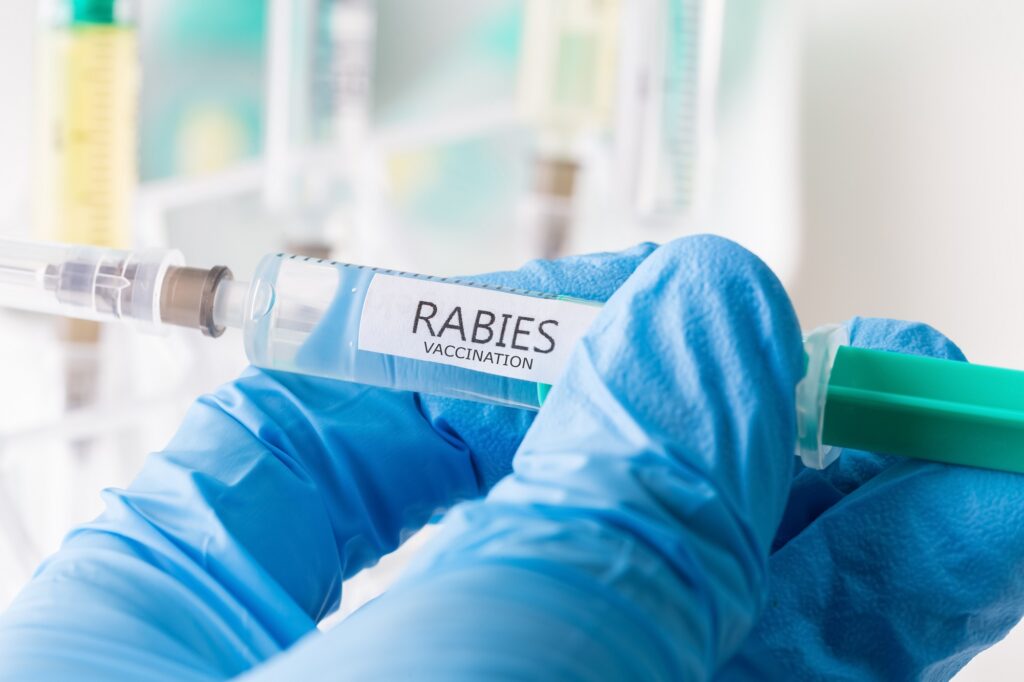Rabies remains one of the most lethal viral infections known to humanity, characterized by a nearly 100% fatality rate once clinical symptoms appear. Vaccination plays a critical role in rabies prevention, safeguarding individuals at risk and controlling the spread of the virus globally. We examine in depth the types of rabies vaccines, immunization schedules, indications for vaccination, and special considerations for different populations.

Overview of the Rabies Virus and Transmission
Rabies is a zoonotic viral disease caused by viruses of the Lyssavirus genus. Transmission to humans typically occurs through the bite or scratch of an infected animal. Key vectors include:
- Domestic dogs (primary source globally)
- Bats
- Raccoons
- Skunks
- Foxes
Following entry, the virus travels along peripheral nerves to the central nervous system, culminating in fatal encephalitis if left untreated.
Types of Rabies Vaccines
Modern rabies vaccines are safe, highly effective, and produced using cell culture techniques. Types include:
- Human Diploid Cell Vaccine (HDCV)
- Purified Chick Embryo Cell Vaccine (PCECV)
- Purified Vero Cell Rabies Vaccine (PVRV)
All are inactivated vaccines, inducing a strong immune response with minimal side effects.
Rabies Preexposure Prophylaxis (PrEP)
Indications for Preexposure Vaccination
- Laboratory workers handling rabies virus
- Veterinarians and animal handlers
- Travelers visiting high-risk regions
- Wildlife control and spelunking professionals
Preexposure Vaccination Schedule
- Three doses of rabies vaccine:
- Day 0
- Day 7
- Day 21 or 28
Benefits of Preexposure Vaccination
- Simplifies postexposure management.
- Eliminates the need for rabies immune globulin (RIG).
- Provides an added layer of protection in case of unrecognized exposures.
Rabies Postexposure Prophylaxis (PEP)
Indications for Postexposure Vaccination
Postexposure prophylaxis is necessary after:
- Bites or scratches by potentially rabid animals
- Exposure of mucous membranes to animal saliva
- Handling of animals suspected to carry rabies
Postexposure Vaccination Schedule
- For unvaccinated individuals:
- Rabies vaccine on Days 0, 3, 7, and 14.
- RIG administered on Day 0.
- For previously vaccinated individuals:
- Vaccine on Days 0 and 3.
- No RIG required.
Administration Guidelines
- Intramuscular injection in the deltoid region.
- For infants and small children, the anterolateral thigh is preferred.
- Avoid administration in gluteal muscles to ensure proper absorption.
Rabies Immunoglobulin (RIG)
Purpose of RIG
RIG provides immediate passive immunity during the period before the patient develops their own protective antibody response following vaccination.
Administration of RIG
- Infiltrate as much RIG as possible directly into and around the wound.
- Any remaining volume administered intramuscularly at a separate site from the vaccine.
Dosage
- Human RIG: 20 IU/kg body weight
- Equine RIG: 40 IU/kg body weight (if human RIG is unavailable)
Special Populations and Rabies Vaccination
Immunocompromised Individuals
- Require serologic testing 1–2 weeks after completing the vaccination series to confirm immunity.
- May need additional doses if antibody levels are insufficient.
Pregnant and Breastfeeding Women
- Rabies vaccination and RIG are considered safe and should not be withheld in cases of potential exposure.
Pediatric Considerations
- The vaccine is administered similarly in children, adjusted only for body site selection.
Safety and Side Effects of Rabies Vaccines
Rabies vaccines are highly safe, with minimal adverse effects:
- Common side effects:
- Injection site pain, redness, and swelling
- Mild fever and headache
- Rare side effects:
- Allergic reactions (rash, pruritus)
- Anaphylaxis (extremely rare)
Routine observation after vaccination ensures timely management of any rare complications.
Global Rabies Control and Elimination Efforts
Rabies vaccination campaigns targeting domestic dog populations remain the cornerstone of global rabies elimination strategies. Key efforts include:
- Mass dog vaccination programs
- Public education on rabies risk
- Improved access to human rabies vaccines and PEP
- Strengthening veterinary and public health systems
Frequently Asked Questions
How long does protection from rabies vaccination last?
Preexposure vaccination typically provides protection for at least two years. High-risk individuals should have their antibody levels checked regularly and receive boosters as needed.
Can rabies vaccination prevent infection if administered after exposure?
Yes, provided it is administered promptly before clinical symptoms develop.
Is there a need for booster doses after rabies vaccination?
Boosters are recommended for high-risk individuals based on antibody titers, generally every 2–5 years.
What should be done if an exposure occurs after preexposure vaccination?
Only two booster doses of vaccine (Days 0 and 3) are required; RIG is not necessary.
Where can one receive rabies vaccination?
Rabies vaccination is available at hospitals, travel clinics, and some urgent care centers equipped to handle vaccinations and PEP protocols.